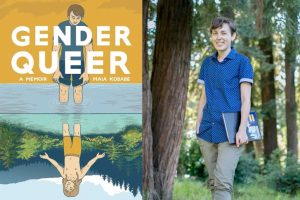 In November, I published a blog, “These banned books are delightful” in response to a disturbing recent article I read titled, “Battling over books – Conservative groups and Republican Officials are campaigning to ban books from schools and libraries.” The article showed the cover of a children’s book titled “My Two Dads and Me,” that was banned by a school district in Walton County, Florida.
In November, I published a blog, “These banned books are delightful” in response to a disturbing recent article I read titled, “Battling over books – Conservative groups and Republican Officials are campaigning to ban books from schools and libraries.” The article showed the cover of a children’s book titled “My Two Dads and Me,” that was banned by a school district in Walton County, Florida.
And I have even seen this play out in my own city, Raleigh and Wake County, North Carolina. A few parents even filed a lawsuit demanding that such books as “Lawn Boy” by Jonathan Evison and “Gender Queer” by Maia Kobabe be removed from school libraries for being inappropriate pornography.
So I decided to order these three aforementioned books to read them for myself.
My November blog (link) reviewed two of those books. “My Two Dads and Me” written by Michael Joosten and illustrated by Izak Zenou is targeted for pre-school children to depict two fathers enjoying all kinds of activities with their kids. And “Lawn Boy” by Jonathan Evison, a beautiful novel that follows an Hispanic young man raised in poverty by a struggling single mother.
And now I have read the third book, “Gender Queer” by Maia Kobabe, an autobiography dealing with identifying as nonbinary and asexual. This captivating book was written in “comic strip” format with over 230 pages of beautiful illustrations and heart-felt prose. Reading about this experience of someone different from myself provided me insight to help me grow as a more inclusive and understanding human being.
NOTE: Maia uses the pronouns e/em/eir, that are a variation of the gender-neutral pronouns they/them/their.
Maia tells eir story from eir early years growing up through junior high, high school, college and into the world of teaching. E shares about the struggle of growing up not feeling that e belonged in the boxes of boy or girl, and then later not feeling that e could identify as straight, gay, bisexual or any of the popular labels. Maia was eir own person wanted to live life comfortable in eir own skin.

Patricia S. Kirkland, a Canadian-American analytic philosopher noted for her contributions to neurophilosophy and the philosophy of mind.
In addition, Maia does share very important biological scientific work documented by Patricia S. Kirkland, a Canadian-American analytic philosopher noted for her contributions to neurophilosophy and the philosophy of mind. Kirkland’s critical work does document how gender formation in the womb is not solely male or female, but that a percentage of developing babies in the womb have chromosome combinations like XXY, XYY, Solo X and XXYY which brings scientific credence to the reality of gender fluid and nonbinary people.
I highly recommend this book as a way for all of us to open our minds to the reality of the infinite diversity within the human family, including around gender identity and sexual orientation. And this is increasingly important in the business and nonprofit worlds as more younger talent now identify as transgender or nonbinary, even as close minded, bigoted politicians try to deny the existence of these diverse fellow human beings.
